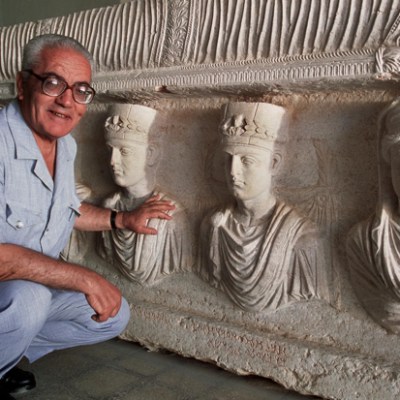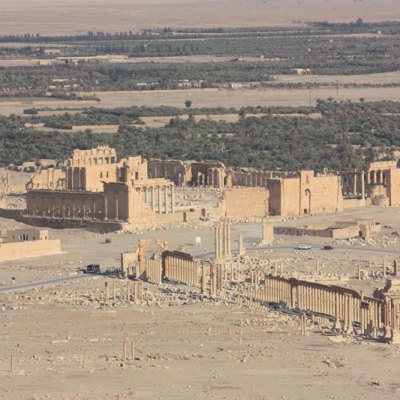It is a sad irony that the recent IS destruction of the temples of Bel and Baalshamin at the site of Palmyra, together with the murder of Khaled al-Asaad, have brought the ancient city to many people’s attention for the first time. The remoteness of the site has meant that the city has always been cloaked in mystery, only truly becoming a viable tourist destination in the past decade. Even in my experience as a Classics undergraduate, Palmyra only ever hovered on the margins of the standard narrative of Greco-Roman art and culture. As a result, we are perhaps now more familiar with images of the destruction of Palmyrene art than with the art itself. But even as the site seems fated for disaster, museums around the world offer valuable opportunities to encounter the city and its cultural heritage through the artefacts they preserve.
The British Museum has an important collection of funerary busts from the site, dating from the 1st–3rd centuries AD. These distinctive limestone reliefs, which would have been used to seal individual burial niches inside a tomb, are carved with a representation of the deceased, symbolising their ‘personality’ or ‘soul’. These portraits are deeply emotive and strikingly individual; they also demonstrate the unique and vibrant style of Palmyrene art, which, like the city itself, is an amalgam of different influences, including Greco-Roman, Parthian, and even Indian. Figures are typically static and depicted facing outward, confronting us with their – and our – mortality. Their features are stylised, their expressions resolute. Women are typically adorned with elaborate jewellery: a 2nd-century AD bust of Aqmat in the British Museum is typical. The inscription, written in Aramaic, poignantly tells us that she was ‘daughter of Hagagu, descendent of Zebida, descendant of Ma’an. Alas!’
Similar examples can be found in the Smithsonian, which has recently redisplayed a funerary relief of a woman called Haliphat (lead image) alongside a series of 18th-century engravings and 19th-century photographs of Palmyra; at the MFA Boston, where a bust of Aththaia combines Greek text with a style of carving that anticipates Greco-Buddhist sculpture from northern India; and the Louvre. Here, a double relief commemorates a husband and wife – Zabidol, son of Salman and Haggai, daughter of Haddudan – their bodies pressed close together in death. The Metropolitan Museum contains a different kind of tombstone, this time engraved with a banquet scene in which the deceased male reclines on a couch accompanied by members of his family – perhaps expressing hope that the afterlife will be similarly convivial.
Tombstone of Regina. Roman, Arbeia Roman Fort, South Shields, Tyne and Wear, England, UK. Tyne and Wear Museum

Although not from Palmyra itself, a 2nd-century AD tombstone now in the Tyne and Wear Museums collection also has something important to teach us about the cultural milieu of the time. The relief was found at Arbeia Roman Fort, South Shields, and is dedicated to a Romano-British woman called Regina, an ex-slave; it was set up by her husband and former master, Barates, who came from Palmyra.
These are remarkable works of art that have much to tell us about ancient Palmyra and its people, not least about the city’s cosmopolitanism. They were originally set up in the hope that they would preserve the memory of the people they commemorated – and it now seems more important than ever that we look and learn what we can.
More on Palmyra: ‘I think most people have either never heard of Palmyra before or can’t visualise it. We’ve tried to connect people to the humanity of the site.’ Julian Raby, director of the Smithsonian’s Freer and Sackler Galleries, speaks to Apollo.




